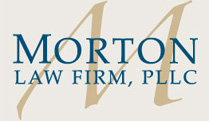Planning for the New “Zero Percent” Tax Bracket
This article addresses a law change that is
important to all wealth planning professionals and their clients.
Beginning January 1, 2008 and continuing through at least 2010, a zero
tax rate may apply to long-term capital gain and dividend income that
would otherwise be taxed at the regular 15% and/or 10% rates. The new
zero tax rate is available to the extent that the taxpayer’s other
taxable income minus exemptions and deductions is less than a specified
amount.
The new zero tax rate thus creates the opportunity for eligible clients
to sell certain appreciated assets at no tax cost. By coordinating
their efforts to ensure that clients take advantage of this
opportunity, the planning team can preserve more of the client’s
investible assets or provide resources to fund implementation of the
planning team’s recommendations.
The Zero Tax Rate
The zero tax rate applies to eligible individual taxpayers who have
"adjusted net capital gain." Adjusted net capital gain is the sum of:
Net capital gain (generally the excess of net long-term capital gains
other than collectibles gain, gain taxed on sales of certain small
business stock under IRC Sec. 1202, and unrecaptured IRC Sec. 1250 gain
over net short-term capital losses, subject to certain limitations),
plus
Qualified dividend income (generally dividend income from domestic
corporations and qualified foreign corporations, including dividends
from U.S. possessions corporations and corporations eligible for
benefits of a comprehensive income tax treaty with the U.S. that
includes an exchange of information program; dividends that are not
qualified include dividends from foreign investment companies,
dividends from stock held for short periods, and payments in lieu of
dividends).
qualified dividend income of non-grantor trusts, estates, and C corporations.
The zero tax rate does not apply to collectibles gain or gain taxed on
sales of certain small business stock under IRC Sec. 1202 (both taxed
at a maximum rate of 28%), or to unrecaptured IRC Sec. 1250 gain (taxed
at a maximum rate of 25%).
Who Gets the Zero Tax Rate?
For tax years beginning January 1, 2008, the zero tax applies to
individuals’ adjusted net capital gain to the extent that it does not
exceed:
the threshold for the taxpayer’s 25% income tax bracket, minus
the taxpayer’s taxable income other than adjusted net capital gain.
Stated another way, the zero rate only applies to adjusted net capital
gain to the extent the taxpayer’s other taxable income minus exemptions
and deductions is below the bottom of the 25% income tax bracket for
that taxpayer.
For 2008, the threshold for the 25% income tax rate is:
- $32,550 for single taxpayers and married taxpayers filing separate returns;
- $65,100 for married taxpayers filing joint returns and surviving spouses; and
- $43,650 for heads of households.
Thus, taxpayers whose ordinary income plus net capital gains and
dividend income not included in adjusted net capital gain exceeds their
respective 25% income tax thresholds will not be eligible for the zero
rate. Conversely, if their 2008 ordinary income plus net capital gains
and dividend income not included in adjusted net capital gain is less
than their respective 25% income tax threshold, the zero tax rate
applies.
Examples
Example 1. Tom and Mary Taxpayer file jointly and have taxable income
of $60,000 in 2008, comprised of $50,000 of ordinary income and $10,000
of adjusted net capital gain. Since the Taxpayer’s ordinary income is
less than the 25% income tax threshold, the zero tax rate would apply
to all of their $10,000 adjusted net capital gain.
Example 2. The Taxpayers have taxable income of $75,000 in 2008,
comprised of $50,000 of ordinary income and $25,000 of adjusted net
capital gain. In this case, $15,100 (the difference between their 25%
income tax threshold and their ordinary income of $50,000) would be
subject to the zero tax rate, and the balance, $9,900 ($75,000 –
$50,000 – $15,100), would be subject to the 15% rate.
Example 3. The Taxpayers have taxable income of $75,000 in 2008,
comprised of $70,000 of ordinary income and $5,000 of adjusted net
capital gain. Since their ordinary income exceeds the 25% income tax
threshold, none of their adjusted net capital gain would be subject to
the zero tax rate – all $5,000 would be subject to the 15% rate.
To the extent taxpayers have a gap between (1) their ordinary income
plus net capital gains and dividend income not included in adjusted net
capital gain and (2) their 25% income tax threshold, that gap can be
taken up by adjusted net capital gain subject to the zero tax rate,
even if they have income that is subject to higher rates.
Example 4. Frank and Susan Taxpayor file a joint return with adjusted
gross income (AGI) of $225,000, consisting of $105,000 of wages, plus
$120,000 of adjusted net capital gain. For 2008, the Taxpayors claim a
total of $55,000 in personal exemptions and itemized deductions,
resulting in taxable income of $170,000 ($225,000 AGI minus $55,000 in
deductions). The zero rate applies to $15,100 of the Taxpayors’
adjusted net capital gain calculated using the formula above as follows:
the $65,100 maximum threshold for joint filers for 2008, minus
their $50,000 of regular taxable income ($170,000 taxable income minus $120,000 of adjusted net capital gain).
The $104,900 balance of the Taxpayors’ adjusted net capital gain ($120,000 minus $15,100) will be subject to the 15% rate.
opportunities to use income and deduction timing to make clients eligible for the zero tax rate.
Application of the "Kiddie Tax"
Also new for 2008 is that the "kiddie tax" (which applies to the child
at his or her parents’ highest marginal rate on the child’s unearned
income over $1,800) affects many more children.
For
tax years before 2008, the kiddie tax applied only to children under
14. Effective January 1, 2008, a child is subject to the kiddie tax if
he or she is (a) under 18; or (b) age 18, or a full-time student and
19-23 years old, and his or her earned income constitutes one-half or
less of that child’s support.
full-time student, exceeds one-half his or her support, the kiddie tax rules will not apply and the child will be able to take
advantage of the zero rate for long-term capital gains and qualified dividends.
Conclusion
The zero tax rate for adjusted net capital gains presents a significant
opportunity for those clients whose ordinary income is less than their
25% income tax rate threshold (no matter how high their other income),
as well as clients with college-aged children whose earned income is
greater than one-half of their support. Like so many other areas, this
is one where the client’s planning team needs to work together to
ensure that clients pay the least amount of tax possible while still
accomplishing personal goals and objectives. Paying no tax on eligible
adjusted net capital gains can provide additional investible assets or
increased liquidity to fund the planning team’s recommendations.









Sorry, comments for this entry are closed at this time.